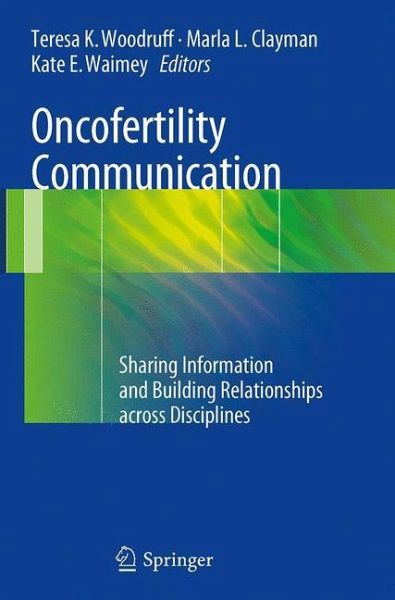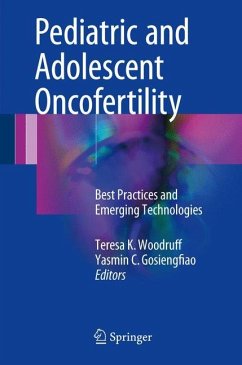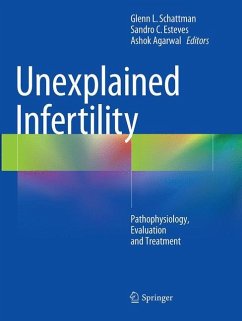
Oncofertility Communication
Sharing Information and Building Relationships across Disciplines
Herausgegeben: Woodruff, Teresa K; Clayman, Marla L; Waimey, Kate E
Versandkostenfrei!
Versandfertig in 6-10 Tagen
83,99 €
inkl. MwSt.

PAYBACK Punkte
42 °P sammeln!
Oncofertility integrates the two previously distinct fields of cancer treatment and fertility research and aims to explore and expand the reproductive future of cancer survivors. In order to achieve the goal of fertility preservation, the Oncofertility community must focus on communication and the way data is provided and received. Concomitant with the rapidly changing technology of Oncofertility, there have been radical shifts and advances in the way health educators and clinicians can produce and share information. As success rates of reproductive techniques such as egg freezing and banking ...
Oncofertility integrates the two previously distinct fields of cancer treatment and fertility research and aims to explore and expand the reproductive future of cancer survivors. In order to achieve the goal of fertility preservation, the Oncofertility community must focus on communication and the way data is provided and received. Concomitant with the rapidly changing technology of Oncofertility, there have been radical shifts and advances in the way health educators and clinicians can produce and share information. As success rates of reproductive techniques such as egg freezing and banking continue to rise, providing increasing opportunities for young cancer patients to preserve their fertility prior to the onset of cancer treatments, communication among professionals in oncology, reproductive medicine, and psychosocial work, among others, becomes crucial, and clinical demand for Oncofertility information is expected to rise considerably.
Oncofertility Communication describes and addresses the myriad channels through which the multiple audiences involved in Oncofertility can be served with appropriate and accurate information about cancer-related fertility issues. The text answers frequently asked questions and provides invaluable insights to scientific and health care professionals about communication among the diverse Oncofertility audiences. It incorporates timely discussions about traditional and emerging electronic communication tools and discusses the impact of health care policy changes on the Oncofertility field.
Oncofertility Communication describes and addresses the myriad channels through which the multiple audiences involved in Oncofertility can be served with appropriate and accurate information about cancer-related fertility issues. The text answers frequently asked questions and provides invaluable insights to scientific and health care professionals about communication among the diverse Oncofertility audiences. It incorporates timely discussions about traditional and emerging electronic communication tools and discusses the impact of health care policy changes on the Oncofertility field.














